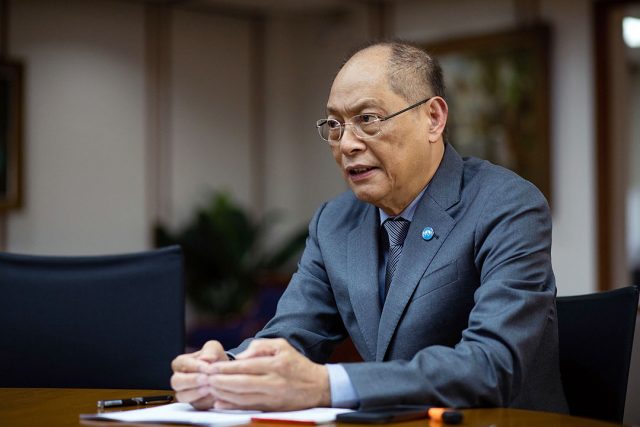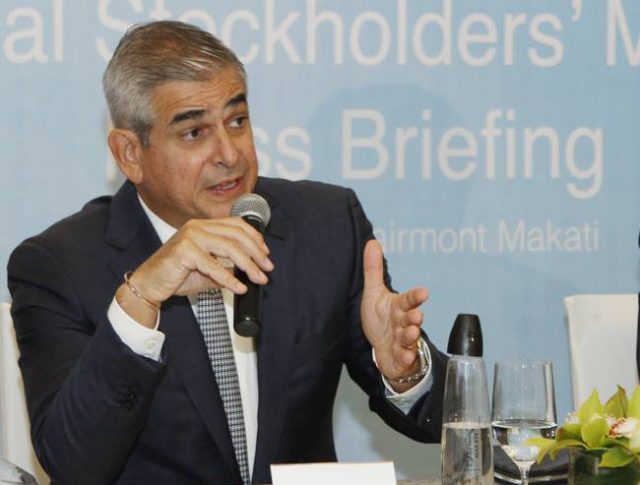Staying Still, but Still keeping at it
PLAYWRIGHT Pat Valera and his fellow artist friends were sharing original songs, stories, and poems with each other remotely during the first months of the pandemic. With live events venues closed, they initially saw no platform to share their creations — until they thought of creating a TV series which used their work.
“What we did during the first part of the pandemic amongst artists, songwriters, and poets, we shared our works of what we’re feeling right now,” Mr. Valera (Mula Sa Buwan, Dekada ’70 Musical) said. “We would find solace from these works. And then we thought, ‘Why are we the only ones reading these?’” he continued in Filipino, adding that they thought that if they did not have a platform or physical venue to share them, “Why not make a series?”
The result was titled Still, which follows musicians who find themselves stuck in a music camp during the first months of the pandemic.
Mr. Valera pitched the series to lead producer Monster Jimenez and then partnered with streaming platform Viu Philippines and production company This Side Up. Assembling the production team and cast soon followed.
“From something that we thought that was just going to be seen in the Philippines, it’s now going to be seen in different countries. Something that we didn’t think was possible back then,” Mr. Valera said at an online press confer-ence on Nov. 5.
THE MUSICAL MINISERIES
In the series, Sab and Laura find themselves stranded at the Daloy Himig music camp in Balay during the nationwide lockdown, along with other misfits, Iggy, Tugs, and Leigh. While in isolation, their lives and stories intertwine through powerful and poignant music. At music camp, they are guided by mentors Nikolas and Annette. They hope to prove to the world somehow that they still have a voice, that they still matter.
Directed by Treb Monteras II (Respeto), the eight-episode musical narrative series will stream over eight Fridays beginning tonight at 8 p.m., until Dec. 31, on Viu.
Mr. Monteras said that his vision for the series was “to take the theater to the audience” and make it immersive.
“When the pandemic happened, it was as if music also stopped in our lives, especially for [the singers and theater actors] because that is their job,” Mr. Monteras said in English and Filipino. “We just want to continue the music in our lives and hopefully, through Still, be inspired to create music and create anything that we want.”
A FIRST FOR VIU PHILIPPINES
Still is Viu Philippines’ first original musical series.
“We claim ourselves to be premium Asian content and we want the Filipino content that we produce to be premium. We look into our data to understand what our consumers are interested in. And what we had noticed in the last 18 months was not only did that sort of great migration to streaming platforms happen, but also the increase in music streams on Spotify were also happening. And we felt that there was a great crossover (potential) between creating music con-tent,” Viu Philippines Country Manager Arianne Kader-Cu on creating their first original miniseries.
“While theater goers or musical lovers are a very specific category, we feel that there’s so much collaboration in music in general, and we feel that the music that was created by This Side Up and their team was just really some-thing that needed to be shared and something that will be continuously streamed,” Ms. Kader-Cu added.
The musical miniseries stars Julie Anne San Jose as Laura; Gab Pangilinan as Sab; Gabby Padilla as Debbie, Lance Reblando as Leigh, Mike Shimamoto as Iggy; and Abe Autea as Tugs. Christian Bautista takes on the role of the camp head and mentor Nikolas, and Bituin Escalante plays Annette, the owner of Balay.
Joining the cast are MC Dela Cruz, Chaye Mogg, Roco Sanchez, Ian Hermogenes, Matthew Chang, Nica Del Rosario, and Shaira Opsimar.
“We could have chosen any story to create but we chose something that was meaningful, something relatable, something that will resonate with every single person not just in the Philippines but all over the world. Because at the end of the day, when words fail… It’s the music that carries us,” Viu Philippines chief content officer Garlic Garcia said.
The miniseries features 30 original songs. Six titles — including its title track “Still,” performed by the cast, “Bagong Mundo,” performed by Julie Anne San Jose, and “Aawit Kang Muli,” performed by Bituin Escalante — are already available on Spotify.
“Music has been such a force during the pandemic because it’s a place where you can tell your truth twice. When you are able to express yourself through song, you are able to not only help yourself, but also aid other people — hopefully they get inspiration from it,” Mr. Valera said.
“Through Still, we, most importantly, hope that it’s able to help people who are experiencing a lot of anxiety, a lot of doubt, especially the young. So, the series is particularly also made for that audience so that they can see and believe and hope and know that they can sing today,” he said. Tickets to Still are available at https://ticket2me.net/e/33588/still-a-viu-original-musical-narrative-series-exclusive-previu. — Michelle Anne P. Soliman













